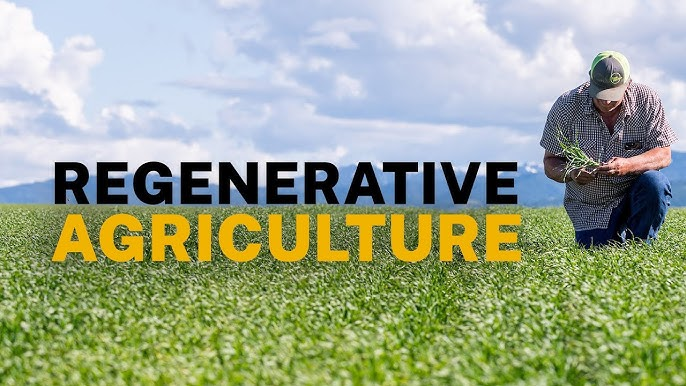Regenerative agriculture is an approach to farming that prioritizes soil health, ecosystem services, and the overall well-being of the agricultural landscape. By focusing on practices that enhance the health and functionality of the ecosystem, regenerative agriculture offers numerous benefits for biodiversity conservation. In Nigeria and around the world, adopting regenerative agriculture can play a crucial role in maintaining and boosting biodiversity in agricultural landscapes.
Enhancing Soil Health and Biodiversity
Regenerative agriculture emphasizes the use of practices like no-till or reduced-till farming, cover cropping, crop rotation, and integrating livestock into farming systems. These practices contribute to healthier soils, which in turn support a more diverse array of soil organisms. Healthy soils teem with life—bacteria, fungi, earthworms, and other organisms play vital roles in nutrient cycling, plant health, and soil structure maintenance.
- Increased soil biota: Regenerative practices boost soil biodiversity by creating habitats for microorganisms and macroorganisms.
- Improved soil structure: Better soil structure enhances water retention, aeration, and root growth, benefiting plants and soil dwellers.
Promoting Above-Ground Biodiversity
By diversifying crop rotations, incorporating cover crops, and reducing chemical inputs, regenerative agriculture creates a more hospitable environment for wildlife. Diverse plantings provide habitat and food for a range of species, from pollinators like bees and butterflies to birds and small mammals.
- Habitat creation: Diverse cropping systems mimic natural ecosystems, providing niches for various species.
- Reduced chemical use: Minimizing synthetic pesticides and fertilizers reduces harm to non-target species, fostering biodiversity.
Supporting Ecosystem Services
Regenerative agriculture enhances ecosystem services critical for biodiversity and agricultural productivity. These include pollination, pest control, soil formation, and water cycling. By promoting ecological balance, regenerative systems support resilience against pests, diseases, and climate variability.
- Pollination and pest control: Diverse ecosystems support beneficial insects that pollinate crops and control pests naturally.
- Water regulation: Healthy soils with organic matter retain water better, reducing runoff and supporting aquatic ecosystems.
Building Resilience to Climate Change
Regenerative practices like agroforestry and cover cropping sequester carbon, enhance soil water holding capacity, and reduce erosion. These benefits contribute to more resilient farming systems that can better withstand climate extremes, supporting both biodiversity and food security.
- Carbon sequestration: Regenerative soils act as carbon sinks, mitigating climate change.
- Climate resilience: Diverse, healthy systems are better equipped to handle droughts, floods, and temperature fluctuations.
Case Studies and Examples
In various parts of the world, including Africa, regenerative agriculture has shown promise in boosting biodiversity. For example, integrating trees into crop fields (agroforestry) in some Nigerian farming communities has led to more diverse and resilient ecosystems.
Challenges and Opportunities
While regenerative agriculture offers many benefits for biodiversity conservation, challenges include transitioning from conventional practices, potential short-term yield reductions, and the need for farmer education. However, long-term benefits for biodiversity, soil health, and resilience make it a promising approach.
Summary
Regenerative agriculture fosters biodiversity conservation by enhancing soil health, promoting diverse ecosystems, supporting ecosystem services, and building resilience to climate change. In Nigeria and globally, adopting regenerative practices can contribute to more sustainable and biodiverse agricultural landscapes.

